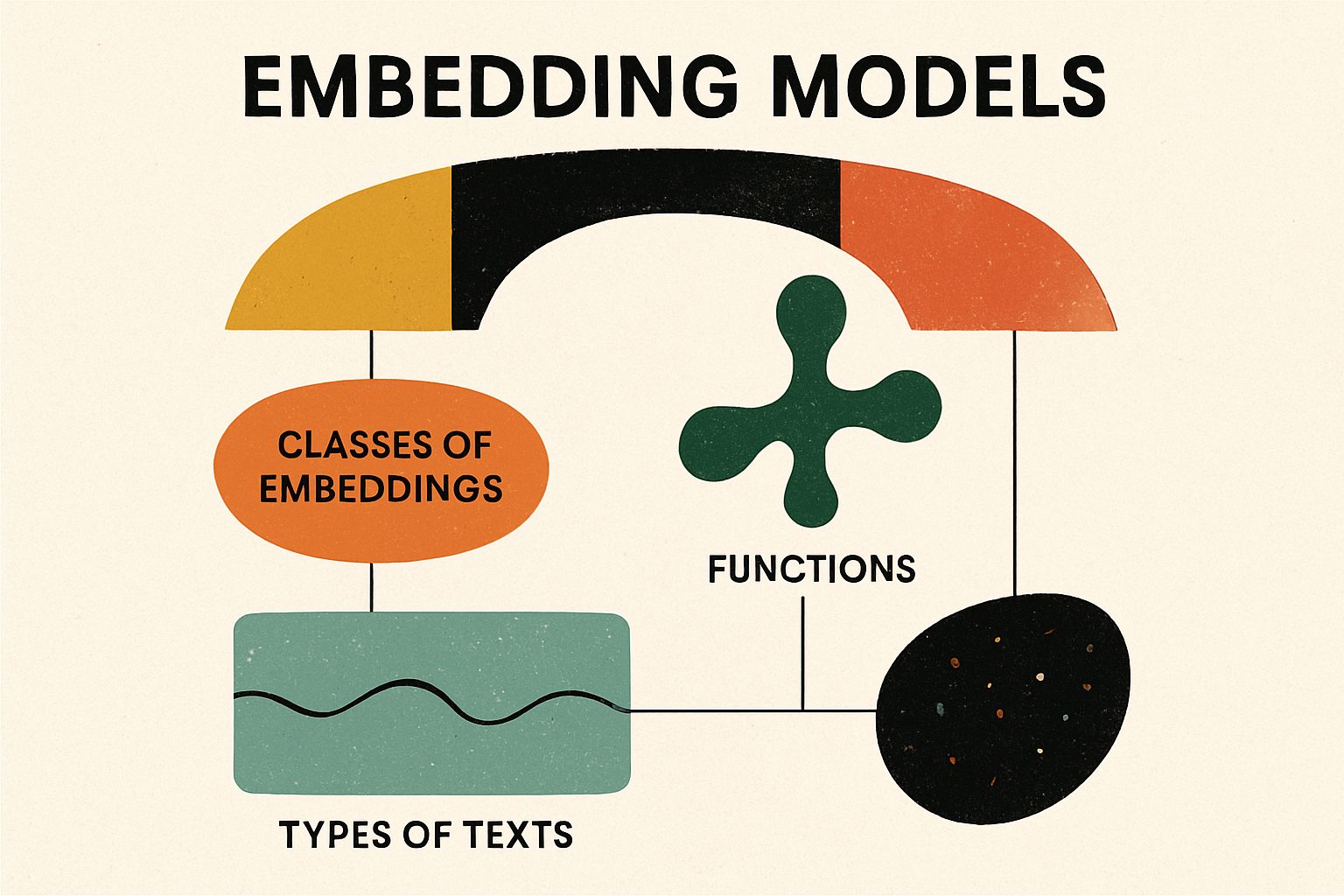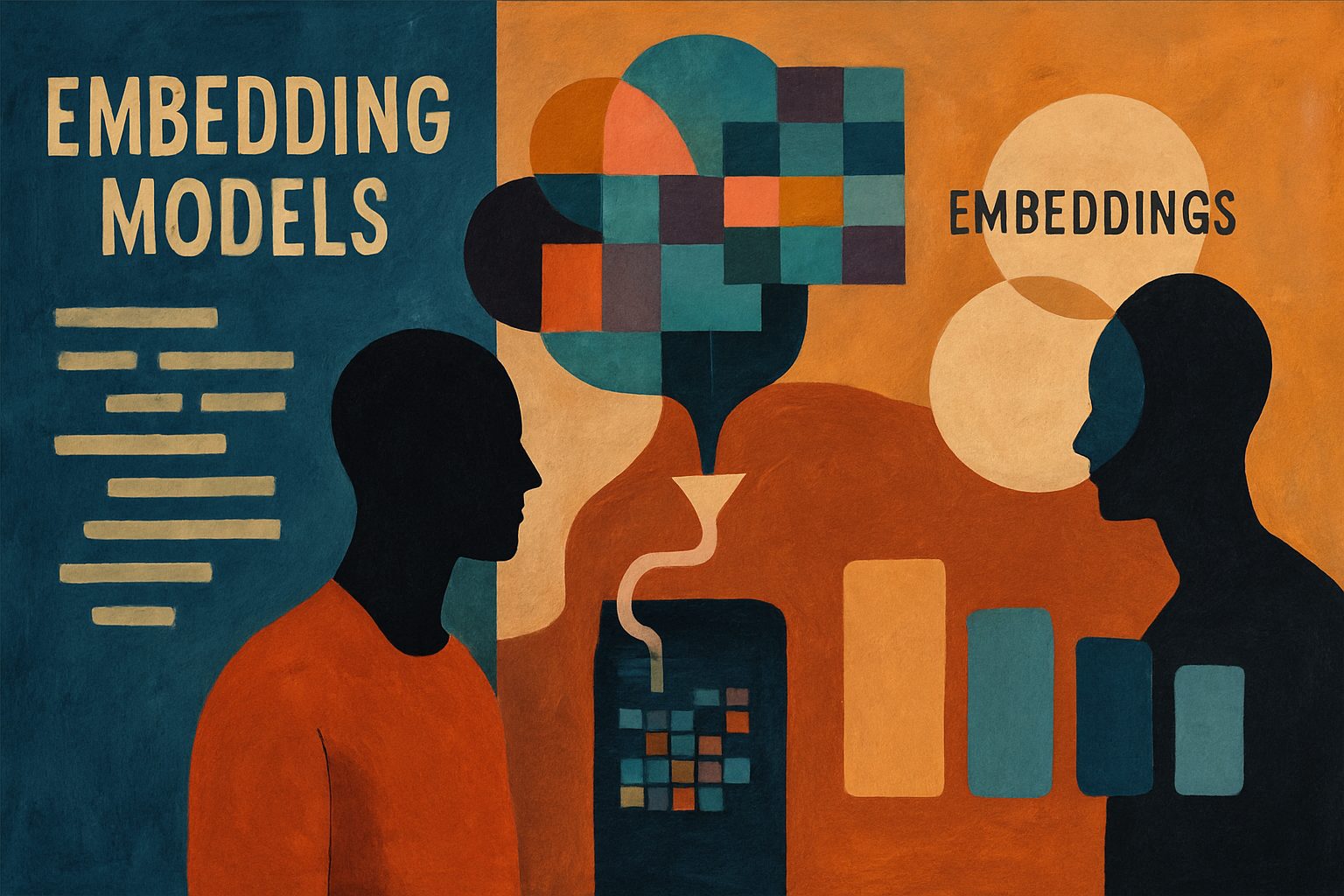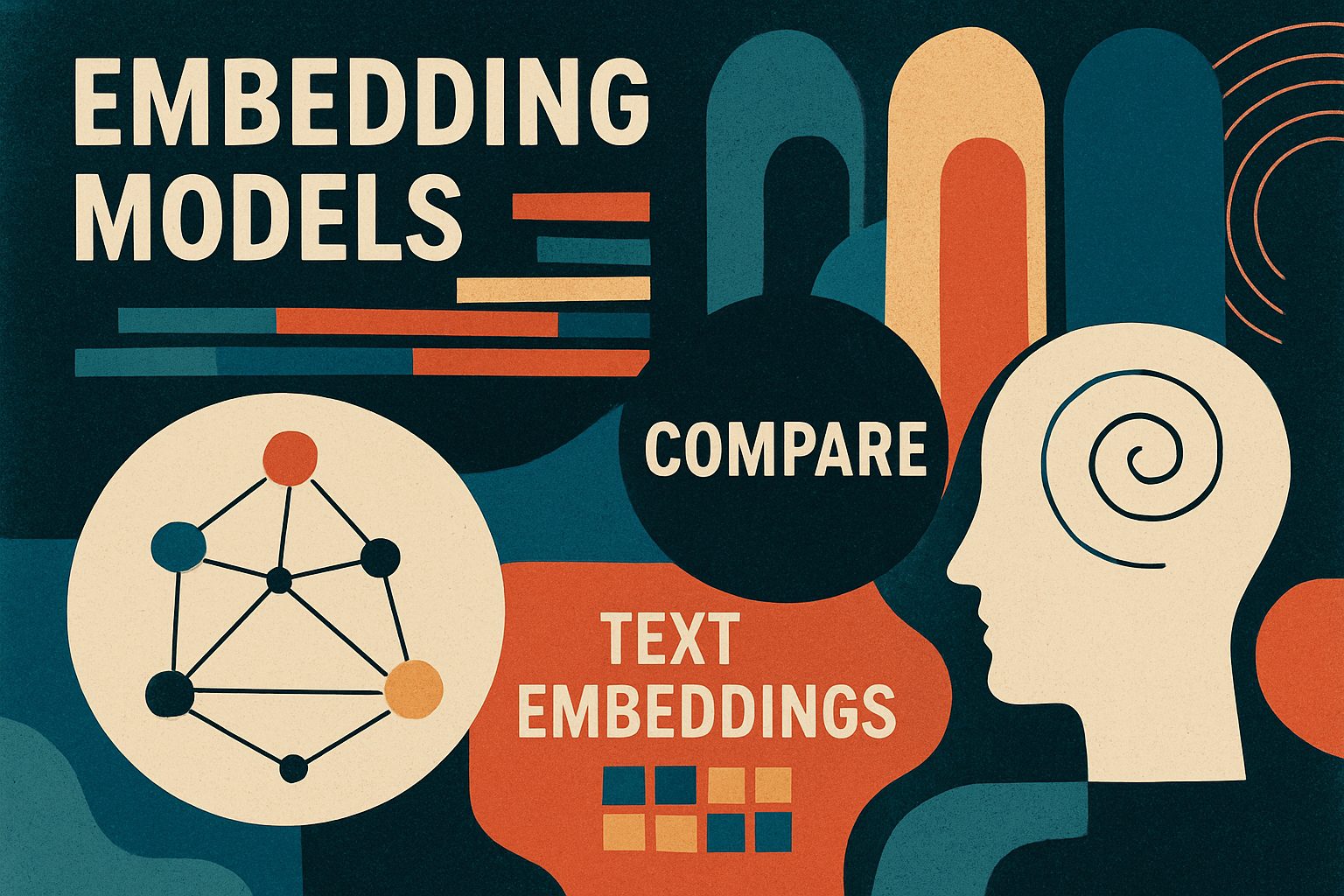
Unlocking the Power of Text: A Deep Dive into Embedding Models and Their Applications
Discover the fascinating world of embedding models and how they transform text into meaningful numerical representations. This article explores various types of embeddings, their functions, and the specific text types they best serve, providing valuable insights for enhancing your natural language processing tasks.
This comprehensive analysis explores Compare the various embedding models and explain their functions, the different classes of embeddings available, and specifically which embeddings are suitable for different types of texts. Highlight this relationship and clarify the reasons behind it., based on extensive research and multiple data sources.

Thesis Statement
The effectiveness of various embedding types in natural language processing (NLP) is closely tied to the characteristics of the text types they represent. Understanding this relationship can enhance the application of embeddings for specific tasks, such as sentiment analysis, document classification, or semantic search.
Types of Embeddings and Their Connection to Text Types
Embeddings serve as numerical representations of text, enabling computers to process and understand language. The types of embeddings used can significantly influence their effectiveness in relation to the format and structure of the text. Below are the primary embedding types and their corresponding text types:
1. Word Embeddings
Definition: Word embeddings represent individual words as vectors in a continuous vector space, capturing semantic relationships based on context.
Key Models: Word2Vec, GloVe, FastText.
Text Types: Suitable for individual words and short phrases.
Example Use Case: In sentiment analysis, word embeddings can identify emotional connotations of words by analyzing their proximity in the embedding space. For instance, “happy” and “joyful” are likely to have similar vector representations, indicating similar meanings. Studies suggest that word embeddings are foundational for tasks requiring semantic understanding, such as text classification and clustering (source).
2. Sentence Embeddings
Definition: Sentence embeddings extend the concept of word embeddings by representing entire sentences or paragraphs as vectors.
Key Models: Universal Sentence Encoder, Sentence-BERT (SBERT).
Text Types: Effective for complete sentences and paragraphs.
Example Use Case: In semantic search, sentence embeddings allow for the comparison of entire queries against documents. For instance, using the vector representation of the query “What are the benefits of meditation?” can yield results that semantically match the query rather than simply matching keywords. This facilitates a more nuanced understanding of user intent and content (source).
3. Document Embeddings
Definition: Document embeddings involve averaging or pooling sentence embeddings to create a vector that encapsulates the content of an entire document.
Text Types: Best for long documents or articles.
Example Use Case: In topic modeling, document embeddings help in clustering similar documents for efficient retrieval. A model can identify and group documents on similar themes based on their vector representations (source).
4. Character Embeddings
Definition: Character embeddings represent individual characters as vectors, allowing models to capture morphology and syntax.
Text Types: Useful for texts with rare words or languages with rich morphology.
Example Use Case: Character embeddings are particularly beneficial in languages with extensive inflections or in handling misspellings. This approach can enhance the performance of tasks like named entity recognition (NER) by providing detailed insights into character-level patterns (source).
Comparative Analysis of Embedding Types
| Embedding Type | Text Type | Best Use Case | Key Models |
|---|---|---|---|
| Word Embeddings | Individual words | Sentiment analysis | Word2Vec, GloVe, FastText |
| Sentence Embeddings | Complete sentences | Semantic search | Universal Sentence Encoder, SBERT |
| Document Embeddings | Long documents | Topic modeling | Averaging sentence embeddings |
| Character Embeddings | Rare words/morphology | Named entity recognition | Character-level embeddings |
Logic and Common Sense Evaluation
When selecting an embedding type, it is crucial to consider the nature of the text data. For short, context-specific tasks, word embeddings may suffice. However, for tasks requiring an understanding of broader context, such as sentiment analysis or semantic search, sentence embeddings are more suitable. Document embeddings come into play for holistic tasks involving long texts, while character embeddings can address unique linguistic challenges.
Conclusion
The relationship between embedding types and text types is pivotal for optimizing NLP tasks. By aligning the appropriate embedding type with the specific characteristics of the text, practitioners can enhance the effectiveness of their models. Future advancements in embedding technologies, such as transformer-based models like BERT, promise to further refine this relationship by allowing for context-sensitive embeddings that can adapt to various text structures (source). Understanding these dynamics will be essential as
Embedding models are pivotal in natural language processing (NLP) as they transform high-dimensional data into dense vector representations, capturing semantic relationships effectively. This research aims to provide an understanding of various popular embedding models used in NLP, offering insights into their architectures, advantages, and applications.
Thesis Statement
The proliferation of embedding models has transformed the landscape of NLP, enabling more nuanced understanding and processing of language through semantic representations. This document outlines key models, their unique features, and practical utility in the field.
Key Embedding Models
Below is a compilation of popular embedding models, highlighting their core features and applications.
| Model Name | Type | Key Features | Applications |
|---|---|---|---|
| Word2Vec | Word Embedding | Utilizes CBOW and Skip-Gram architectures to predict word context; captures semantic similarity. | Text classification, sentiment analysis |
| GloVe | Word Embedding | Uses global co-occurrence statistics to generate word vectors. | Document similarity, clustering |
| FastText | Word Embedding | Enhances Word2Vec by considering subword information, improving handling of rare words. | Text classification, language modeling |
| BERT | Contextual Embedding | Bidirectional transformer model generates contextualized embeddings, capturing word meaning based on context. | Named entity recognition, question answering |
| Sentence-BERT | Sentence Embedding | Adapts BERT for generating sentence embeddings using pooling techniques. | Semantic textual similarity, clustering |
| Universal Sentence Encoder (USE) | Sentence Embedding | Uses transformer architecture to generate embeddings for sentences and paragraphs. | Semantic search, paraphrase detection |
| NV-Embed-v2 | Generalist Embedding | State-of-the-art performance in various tasks using latent-attention pooling. | Semantic search, information retrieval |
| CLIP | Multimodal Embedding | Aligns images and text in a shared embedding space, enabling cross-modal understanding. | Image retrieval, content-based recommendation |
| Jina Embeddings | Generalist Embedding | Focuses on building embeddings for various data types, including text and images. | AI-powered systems for semantic search |
| E5 (Embedding for Everything) | Generalist Embedding | Instruction-tuned model optimizing embeddings for various tasks across domains. | Text classification, information retrieval |
1. Word2Vec
Developed by Google, Word2Vec is one of the foundational models in NLP. It employs two architectures: Continuous Bag of Words (CBOW) and Skip-Gram.
- CBOW: Predicts a word based on its context.
- Skip-Gram: Predicts context words given a target word.
This model excels at capturing semantic relationships, making it invaluable for tasks like sentiment analysis and text classification (GeeksforGeeks).
2. GloVe
GloVe (Global Vectors for Word Representation) is another seminal model developed by Stanford University. It generates embeddings by leveraging the co-occurrence matrix of words across a corpus, thus providing a global statistical context.
- Advantages: Captures both local and global word context, suitable for various NLP applications (Medium).
3. FastText
FastText, developed by Facebook, improves upon Word2Vec by considering subword information, allowing it to create embeddings for out-of-vocabulary words.
- Applications: Particularly useful in languages with rich morphology, making it suitable for text classification and language modeling (Medium).
4. BERT
BERT (Bidirectional Encoder Representations from Transformers) represents a significant advancement in embedding models. It captures contextual meanings by considering both the left and right context of words.
- Applications: BERT is widely used for named entity recognition, question answering, and other complex NLP tasks due to its ability to generate context-aware embeddings (Medium).
5. Sentence-BERT
This model adapts BERT to generate sentence embeddings, allowing for more efficient computation of sentence similarity.
- Usage: Commonly
Thesis
Embedding models serve as crucial components in machine learning, particularly in natural language processing (NLP), computer vision, and recommendation systems. By transforming high-dimensional data into lower-dimensional representations, these models enable efficient processing and semantic understanding. This analysis will delve into several prominent embedding models, examining their operational mechanisms and practical applications.
Overview of Embedding Models
Embedding models can be categorized into different types based on the nature of the data they represent. Here are the primary categories:
| Type of Embedding | Description | Examples |
|---|---|---|
| Word Embeddings | Represent individual words as vectors, capturing semantic relationships. | Word2Vec, GloVe, FastText |
| Sentence Embeddings | Capture the meaning of entire sentences or paragraphs. | Universal Sentence Encoder, SBERT |
| Image Embeddings | Represent images as vectors, often used in computer vision tasks. | CNN-based embeddings |
| Graph Embeddings | Map nodes or subgraphs to vectors, preserving structural relationships within graphs. | DeepWalk, GraphSAGE |
Detailed Analysis of Key Embedding Models
1. Word2Vec
Functionality: Developed by Google, Word2Vec utilizes shallow neural networks to learn word associations from a text corpus. It primarily employs two architectures:
- Continuous Bag of Words (CBOW): Predicts a target word based on its surrounding context words.
- Skip-Gram: Predicts surrounding context words given a target word.
Applications: Word2Vec is foundational in NLP, enabling tasks like semantic search and text classification. Words that share similar contexts are represented closely in the vector space, facilitating calculations like cosine similarity to determine word relationships.
2. GloVe (Global Vectors for Word Representation)
Functionality: GloVe creates embeddings by aggregating global word-word co-occurrence statistics from a corpus. The model’s objective is to find word representations that capture the ratio of probabilities of co-occurrences, resulting in meaningful vector representations.
Applications: GloVe is widely used in sentiment analysis, document classification, and as a pre-trained model for various NLP tasks. Its embeddings are effective for capturing semantic relationships, making it suitable for tasks requiring contextual understanding.
3. FastText
Functionality: Developed by Facebook, FastText enhances Word2Vec by representing words as bags of character n-grams. This allows the model to generate embeddings for words not seen during training, enabling it to handle out-of-vocabulary words effectively.
Applications: FastText is particularly useful in applications where morphological variations of words are important, such as in languages with rich morphology. It is utilized for text classification, language identification, and semantic search.
4. Universal Sentence Encoder (USE)
Functionality: USE generates embeddings for sentences and paragraphs by averaging or pooling word embeddings. It is designed to handle various NLP tasks by representing the semantic meaning of entire sentences rather than individual words.
Applications: USE is used in semantic similarity tasks, paraphrase detection, and information retrieval systems. Its ability to capture the contextual meaning of sentences makes it effective for applications requiring nuanced understanding.
5. BERT (Bidirectional Encoder Representations from Transformers)
Functionality: BERT represents a significant advancement in embedding models by using transformers to capture bidirectional context in language. It is pre-trained on a vast amount of text and fine-tuned for specific tasks, allowing for rich contextual embeddings.
Applications: BERT is widely used for a variety of NLP tasks, including question answering, sentiment analysis, and named entity recognition. Its ability to understand context deeply enhances performance across these tasks.
6. Image Embeddings
Functionality: In computer vision, embeddings convert images into vectors using Convolutional Neural Networks (CNNs). These embeddings capture visual features and representations, allowing for efficient image processing and analysis.
Applications: Image embeddings are used in image classification, object detection, and retrieval systems. They enable systems to identify similar images based on visual characteristics effectively.
7. Graph Embeddings
Functionality: Graph embeddings map nodes of a graph to vectors while preserving the graph’s structural properties. Techniques like DeepWalk and GraphSAGE generate embeddings that reflect the relationships between nodes.
Applications: Graph embeddings are vital in social network analysis, recommendation systems, and knowledge graph construction. They allow for efficient processing of graph data while retaining important relational information.
Comparison of Embedding Models
| Model | Type | Key Feature | Use Cases |
|---|---|---|---|
| Word2Vec | Word Emb |
Vyftec – Embedding Models Analysis
Unlock the power of AI with our in-depth analysis of embedding models tailored for various text types. Experience Swiss quality and precision in research—let’s elevate your projects together!
📧 damian@vyftec.com | 💬 WhatsApp


